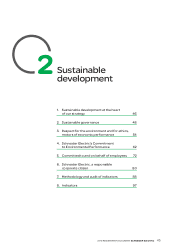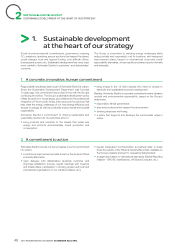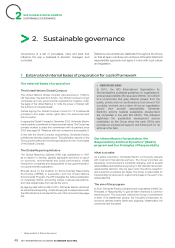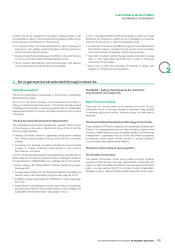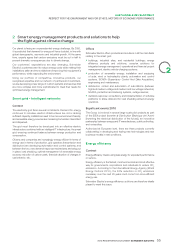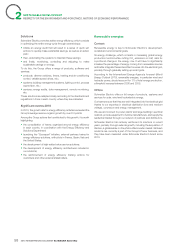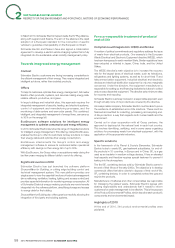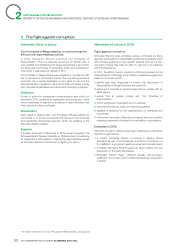APC 2010 Annual Report Download - page 52
Download and view the complete annual report
Please find page 52 of the 2010 APC annual report below. You can navigate through the pages in the report by either clicking on the pages listed below, or by using the keyword search tool below to find specific information within the annual report.
SUSTAINABLE DEVELOPMENT
2
>
Zoom 2010
Launch of the Responsibility & Ethical Dynamics (R&ED) program in 2010
A common policy: Our Principles of Responsibility
Our Principles of Responsibility is a 15-page document that is as
pragmatic and realistic as possible, a synthesis of the Group’s
common commitments to employees, partners, shareholders,
the planet & society. Our Principles of Responsibility does not
claim to cover all ethical dilemmas, but rather serves as a general
guideline. They are adapted locally to meet local practices or legal
requirements.
In 2010, the Our Principles of Responsibility document was translated
into 30languages and sent to all Group employees.
A clause was added to all employment contracts, specifying that
new arrivals had read Our Principles of Responsibility when they
joined Schneider Electric.
Adapted processes
The Responsibility & Ethical Dynamics program provides each
employee with a method for asking the right questions and seeking
out the right people according to two approaches:
•a detailed critical thinking process to take the right steps in
delicate situations. This may be broken down into three stages:
1. consulting the program’s Intranet site;
2. contacting one’s manager and/or a member of the concerned
department (legal, fi nancial, human ressources (HR),
environment, etc.);
3. contacting the entity’s Principles of Responsibility advisor.
•an alert process to guide employees towards the right bodies
step-by-step:
1. contact their N+1 … N+X managers;
2. use existing in-house outlets (legal, fi nancial, HR, environment, etc.);
3. contact the Group compliance committee.
Dedicated teams and organisation
The program requires implementation of an organisation including
the following:
•a Governance Committee and a network of Principles of
Responsibility Advisors.
They are responsible for implementing the Responsibility & Ethical
Dynamics program.
•a Compliance Committee and a network of Compliance Offi cers.
They are responsible for detecting and managing cases of non-
compliance with the processes defi ned, in line with local laws and
regulations and Our Principles of Responsibility.
Three tools accessible to all employees
•An Intranet site accessible to all employees from the global
intranet home page, providing all information on the program and
Our Principles of Responsibility, as well as news and progress in
the fi eld.
•Frequently Asked Questions – FAQs. This tool was introduced
following a collection of reports written by the managers after the
program and Our Principles of Responsibility were presented to
their teams.
•An online e-learning module. The aim is that, at the end of the
session, the trainee is familiar with Our Principles of Responsibility
and more comfortable using them in his or her job. At the end
of 2010, around 15,000employees participated in the module:
95% of them felt that the module was a good use of their time,
and 94% rated the module as good or excellent.
Measuring roll-out and effectiveness
Our Principles of Responsibility were rolled out in all the Group’s
entities. In November and December2010, internal audit launched
a campaign to evaluate the roll-out plan. The results include the
fi ndings of a survey of 10,000employees and an audit that includes
Argentina, China, France, India, Indonesia, Italy, Russia, the United
Arab Emirates and the United States.
•73% of employees questioned said they were familiar with Our
Principles of Responsibility.
•84% of survey participants stated that the information given was
useful and comprehensive.
Outlook for 2011
Program roll-out will continue in 2011 along a number of axes:
•implementation of the recommendations given during the internal
audit in late 2010, primarily continuing communication actions
and training for employees in countries most susceptible to
breaches of ethics;
•working with the Principles of Responsibility Advisors to forge
closer ties between the principles and the operational procedures
and directives that should be readily available to all Group
employees.
2010 REGISTRATION DOCUMENT SCHNEIDER ELECTRIC50







